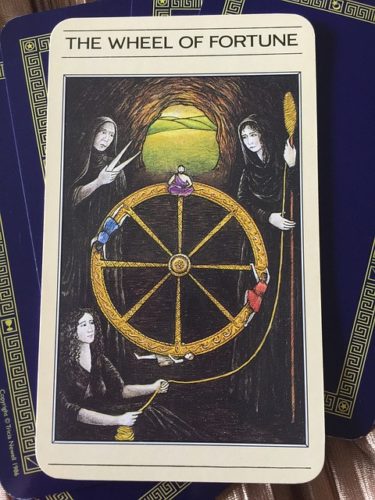Emotional storytelling is taking over branding, but what is it? And how can you use it to your brand’s advantage?
Why Appealing to Emotion Matters

It’s no secret that many humans largely operate based on emotion, so if you want to appeal to them you have to take a more feelings-based approach. Research indicates that even though many people tell you they make decisions based on pure logic, most people do not. People are more likely to decide how they feel, and then come up with an argument to support it.
All successful brands know that keeping their customers loyal and their name in the right light involves both high-quality products and high-quality storytelling.
Having a compelling story behind your brand is what will cause people to make that emotional connection. If people like what you are doing, they will be more receptive to purchasing your products. Emotional storytelling is the best way to appeal to people’s emotions.
SEE ALSO: 5 Reasons Why Digital Psychology Can Improve Conversions
How Emotional Storytelling Works
Emotional storytelling is about creating a positive narrative, or story. You then slip your brand and products seamlessly into that narrative.
One example of this is the controversial Nike ad featuring Colin Kaepernick. It features a host of famous athletes and everyday underdogs working to achieve their goals. It advocates for accomplishing your dreams even against incredible odds.
https://www.youtube.com/watch?v=-hIc_epqfI0
Notice that Nike is actually not directly mentioned at all throughout the majority of the commercial. While their logo is shown a few times, their brand is not the focus of the ad, and their slogan and logo do not appear together until the very end.
Don’t Push, Suggest
Overwhelmingly, people do not hate ads. They just hate bad ones. According to Hubspot research, 83% of people agree with this statement:
“Not all ads are bad, but I want to filter out the really obnoxious ones.”
Nike opts for a subtle and powerful approach. Rather than pushing their brand directly, they weave a feel-good story about diverse underdogs making remarkable achievements. These victories are at all kinds of levels. They also showcase a variety of physical and humanitarian achievements. It is strategically inclusive.
Nike then slides their brand into this narrative, implying that they help to make these things happen.
SEE ALSO: It’s Time to Take the Brand Out of Branded Content
This is far more powerful than plastering Nike swooshes everywhere with no real story. It makes a concerted point that is inspirational. It strikes the right emotional notes without being pushy.
Overwhelmingly, people don’t want to feel like they are being sold something. They do, however, want to emotionally connect with a story.
It is best said by Instart Logic general manager of advertising and media Chris Bindstadt.
Why Is Emotional Storytelling So Effective?
What human beings really want to do is to make associations and find patterns. It makes us feel comfortable, connected, and in control. We often do it without even realizing it.
If you show people a series of unrelated events or things, we will do almost anything to create a cohesive story out of them, even if there is not one.
Have you ever wondered how the cliche of nonsensical car advertisements full of conventionally attractive women came to be in the first place?
While these commercials rarely make much sense, they do make the implication that if you have those cars, you will also have the attention of conventionally attractive women.
This 2013 ad for Rolls Royce Wraith illustrates this perfectly.
Does it make any sense? No. However, it literally shows a glamorous woman running to catch a glimpse of the man driving that car. It implies that if you drive the Rolls Royce Wraith, you will have the same experience on some level.
It makes consumers associate the product with that experience.
While many might consider this commercial cliche and dated, it is the literal depiction of what generations of car ads imply.
Emotions Transcend Arguments
When you use emotional storytelling to make that kind of connection, you make it harder for your viewers to argue against you.
For example, if your brand sells shoes, and you claim your shoes are the most beautiful in the world, it leaves you open to criticism and opposition.
If you make a direct claim, it is very easy for customers to disagree. However, if you incorporate your brand’s shoes into a broader story about the shoes being a part of a positive experience, there is less for consumers to directly disagree with.
Simple statements are easy to disagree with. Someone getting a gift they love is a lot harder to say a direct “no” to.
SEE ALSO: 6 Simple Tips For Developing A Powerful Brand Identity
A Positive Emotions Cheat Sheet
If you ask people to think of positive emotions, they will most likely say happiness, joy, or love. However, there are quite a few more that can be used in different ways. A list from the positive psychology movement includes:
- Joy
- Gratitude
- Serenity
- Interest
- Hope
- Pride
- Amusement
- Inspiration
- Awe
- Love
- Altruism
- Satisfaction
- Relief
Which Emotion Should You Choose?
The wonderful thing about positive emotions is that it’s really hard to choose the wrong one. It all depends on your brand. While some emotions might work better for some brands than others, it is difficult to go wrong.
The real goal of incorporating emotional storytelling into branding is to make consumers have positive associations and a feel-good emotional connection with your brand and products when they see them online or in person.
Think hard about your brand. What is its personality and look? What are its values? If your brand is in the fitness niche, inspiration and pride might suit it better than amusement or awe. However, nothing is set in stone.
The Trick to Picking the Right Emotions
It is not as difficult to pick the emotions you want to be associated with your brand as you might think.
There are many roads to take, however. For example, if you have employees who feel inspired by something, and you want your brand to have an inspirational edge, you might want to weave their stories into your branding. You might even want to have an essay writer on call to help their stories truly hit the right notes. This is not hard to do, and it might be just what your brand needs.
It works because it is a subtle sell that provides valuable feel-good content that can even be recurrent. Again, people want to connect with other people, emotions, and stories. They don’t want to feel like they are being given a clumsy sales pitch. This is where emotional storytelling comes in.
Remember to Keep One Eye on the Future

Just because emotional storytelling is an effective tactic now, does not mean that it will be a permanent go-to. Eventually, people became jaded to new forms of advertising. This is because new tactics become over-used and used poorly by those trying to harness them.
At one point, marketing cars by having attractive women near them was a hugely popular branding tactic. Over time it became a joke and a cliche that did not age particularly well.
While it would be impossible for anyone to say definitively how long emotional storytelling will be relevant and how it will age, for now, it is still new and fresh. While it is a powerful tool right now, don’t be afraid to move onto new things as the marketing landscape changes.
SEE ALSO: Digital Branding Trends to Watch Out For in 2018
What do you think the next big trend in brand-building will be? Comment below…











